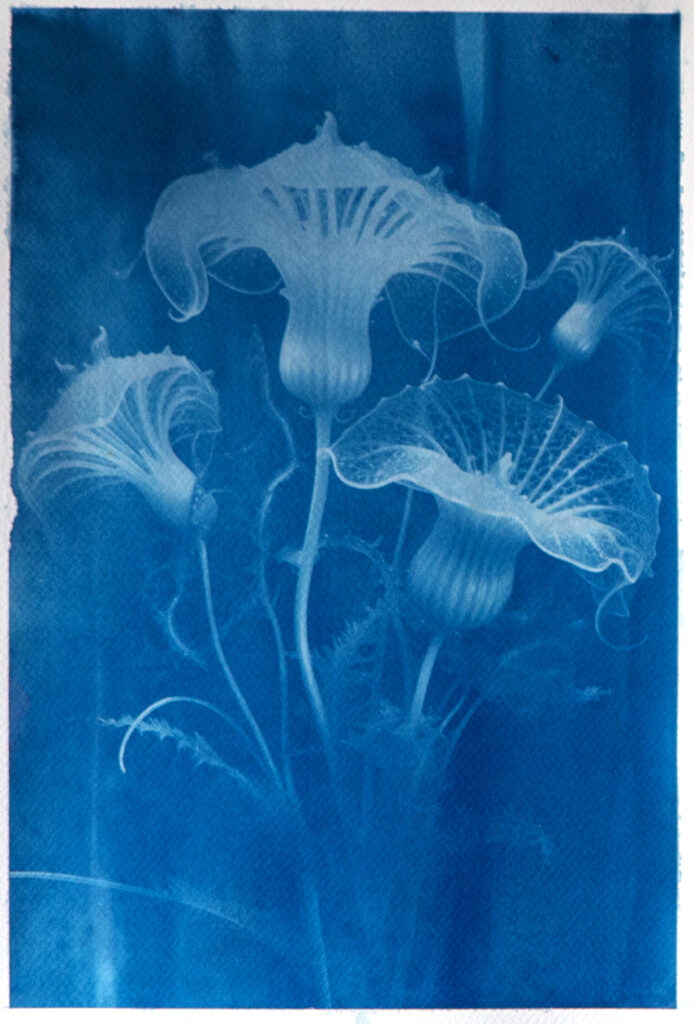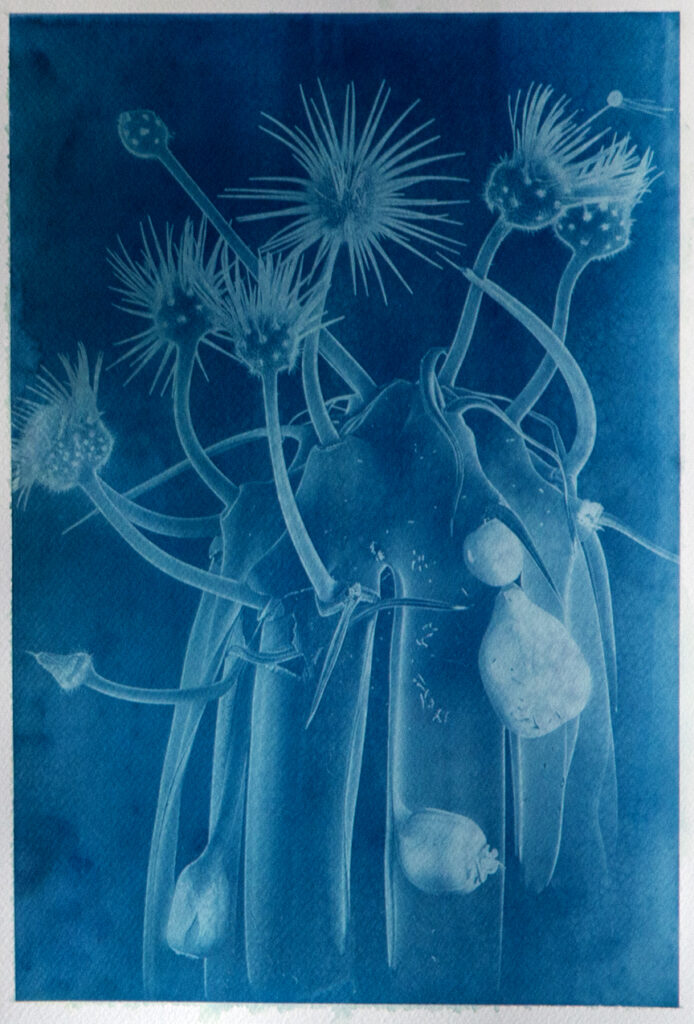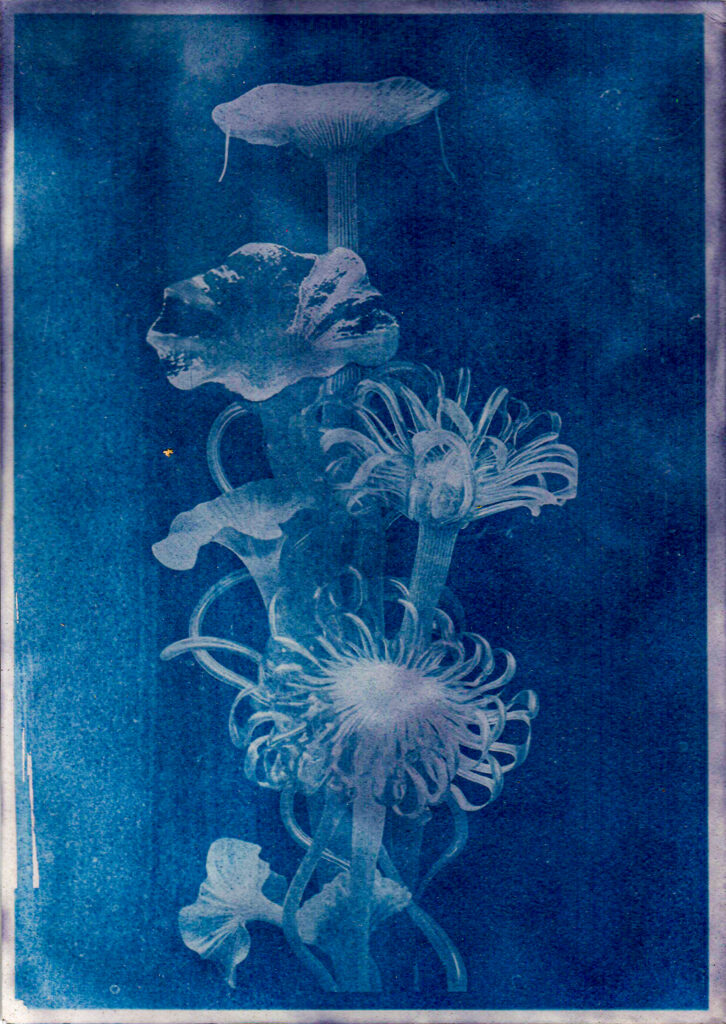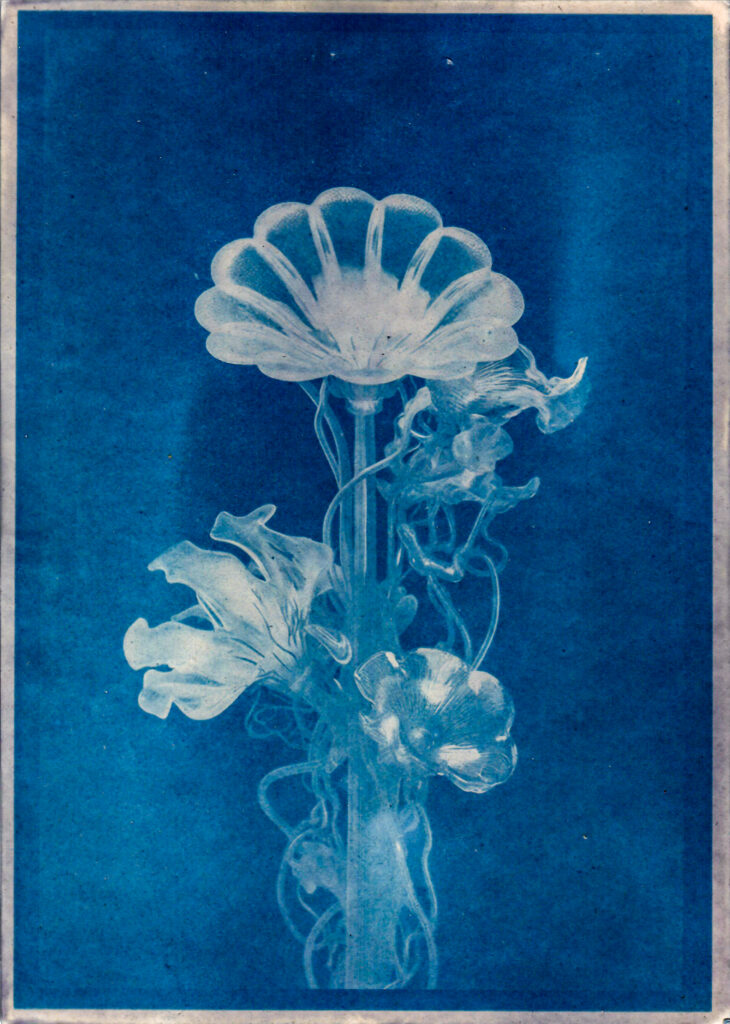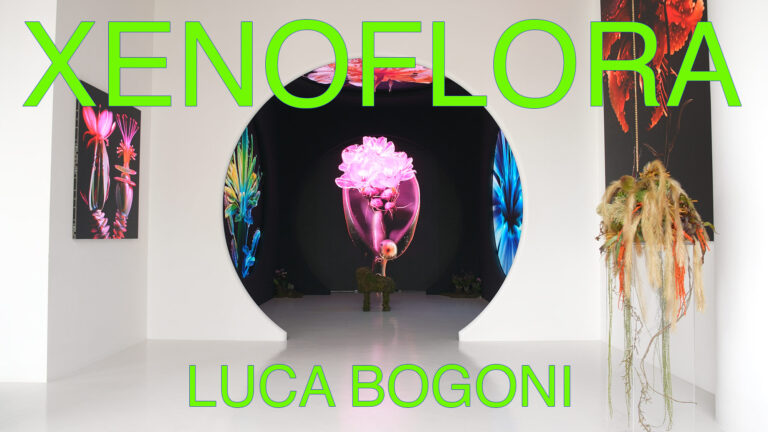
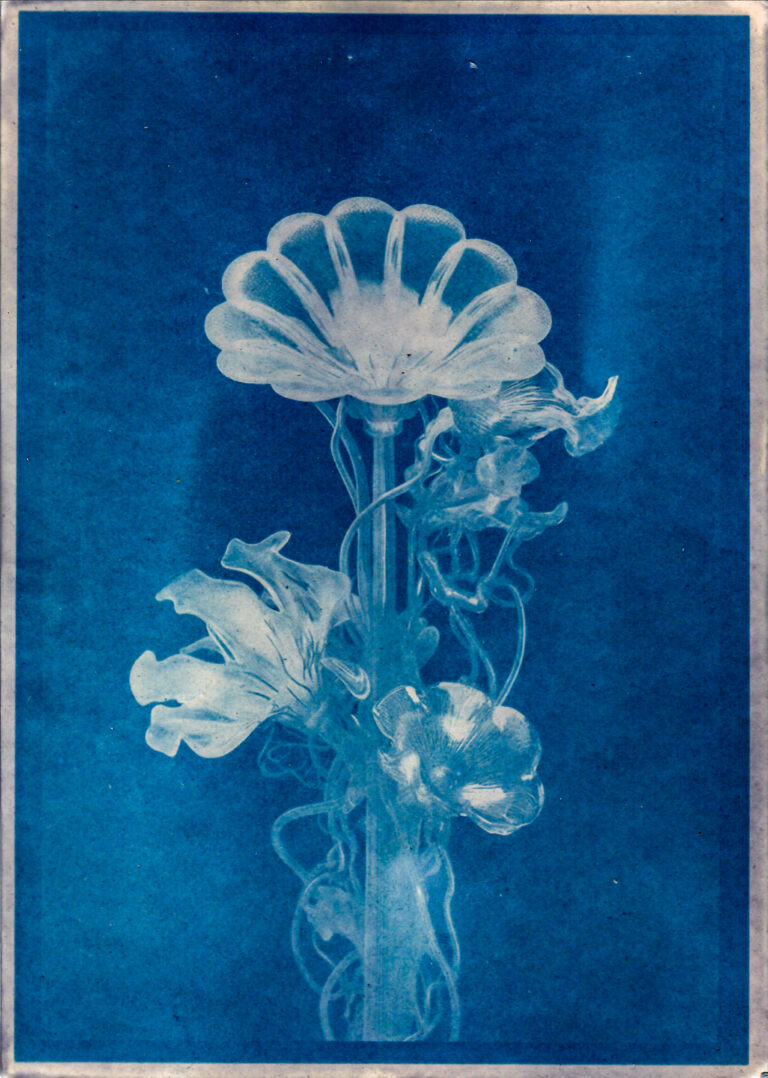

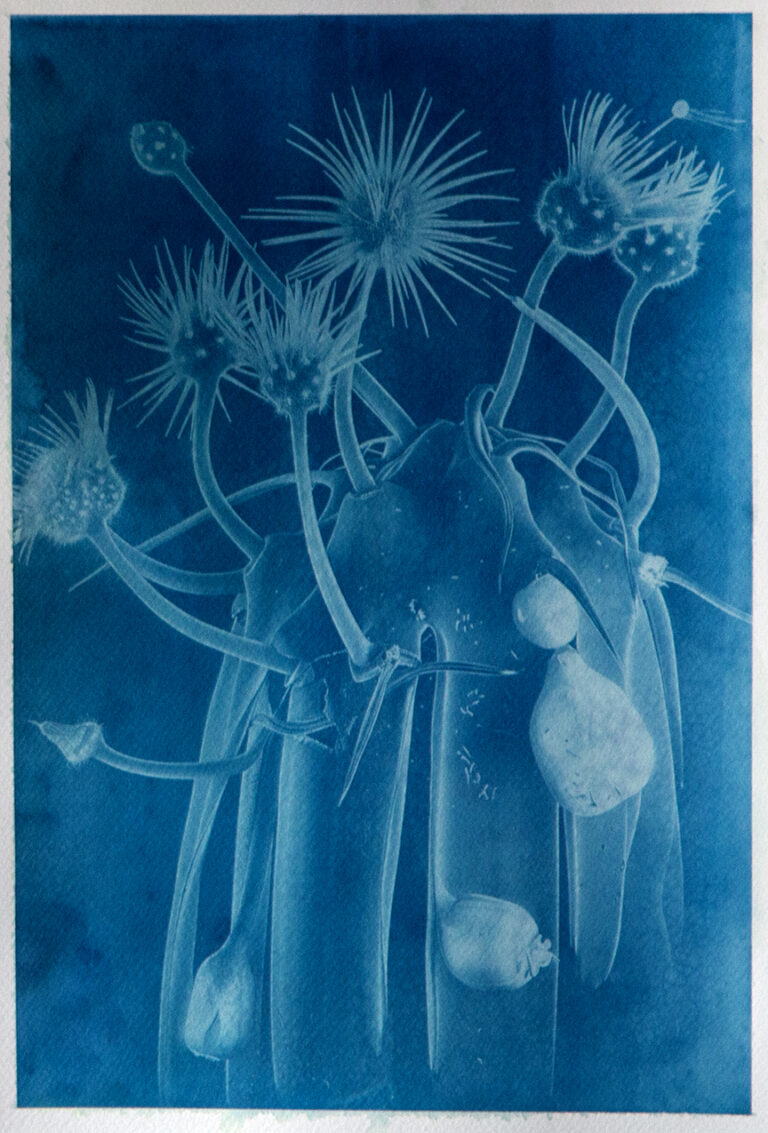
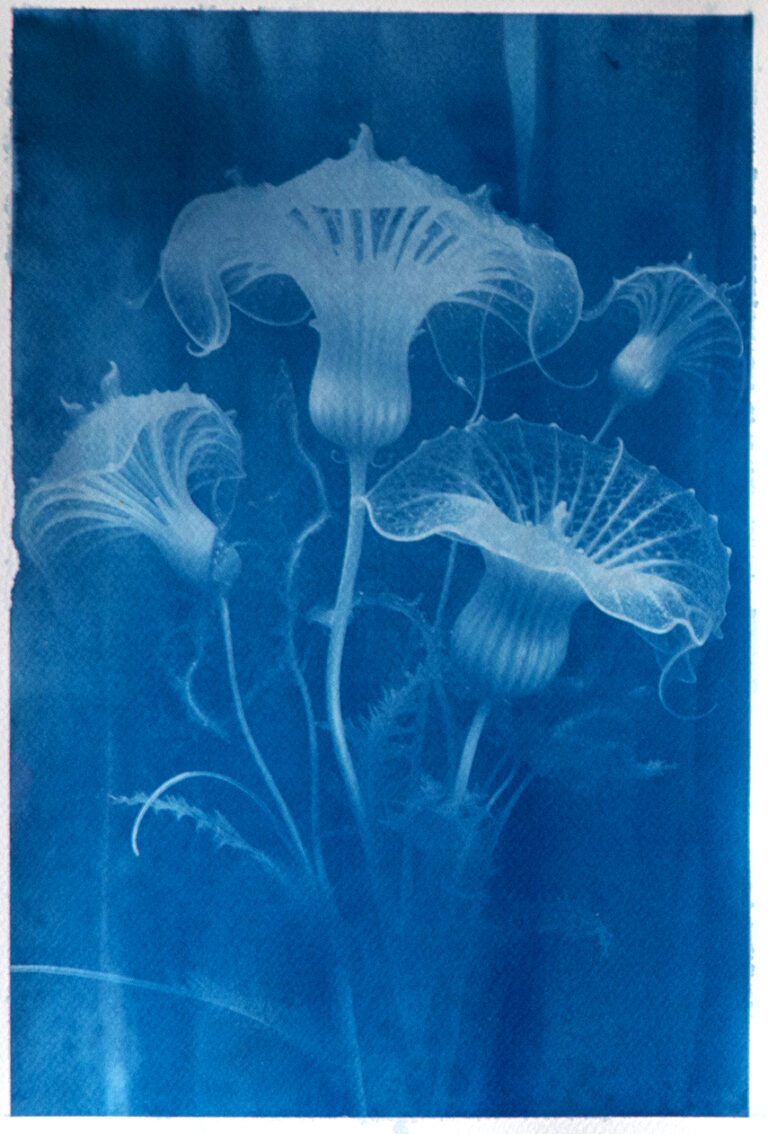





Today, in our digital world, we observe the phenomenon of neobotany, a movement that unites botanical art with advanced technology and critical reflection on the future of life on Earth.
Within this context we present the work of Luca Bogoni, one of the contributing artists to Neo Botanica, who creates cyanotypes of digital flowers. Bogoni’s practice is notable for its hybrid methodology: he merges the luminous chemistry of the historical cyanotype process with the immaterial precision of algorithmically generated imagery. By projecting digital flower forms through light-sensitive emulsions, he produces prints that are at once photographic trace and computational simulation.
This approach resonates with the intellectual legacy of early AI pioneers who sought to model organic reasoning through symbolic computation. Bogoni explores how code can emulate—and even reinvent—botanical growth patterns. His work situates plant morphology within a framework of agro-cybernetics, a field that examines feedback loops between ecological systems and machine intelligence.
Through these digitally mediated cyanotypes, Bogoni invites us to reconsider the porous boundary between nature and technology. The radiant blue prints embody both the archival permanence of nineteenth-century photographic science and the dynamic, data-driven aesthetics of twenty-first-century digital art. In the wider discourse of neobotany, his practice exemplifies how technological innovation can become a tool for ecological reflection, demonstrating that the evolution of flora—and the future of our planet—may depend on precisely such cross-disciplinary syntheses.
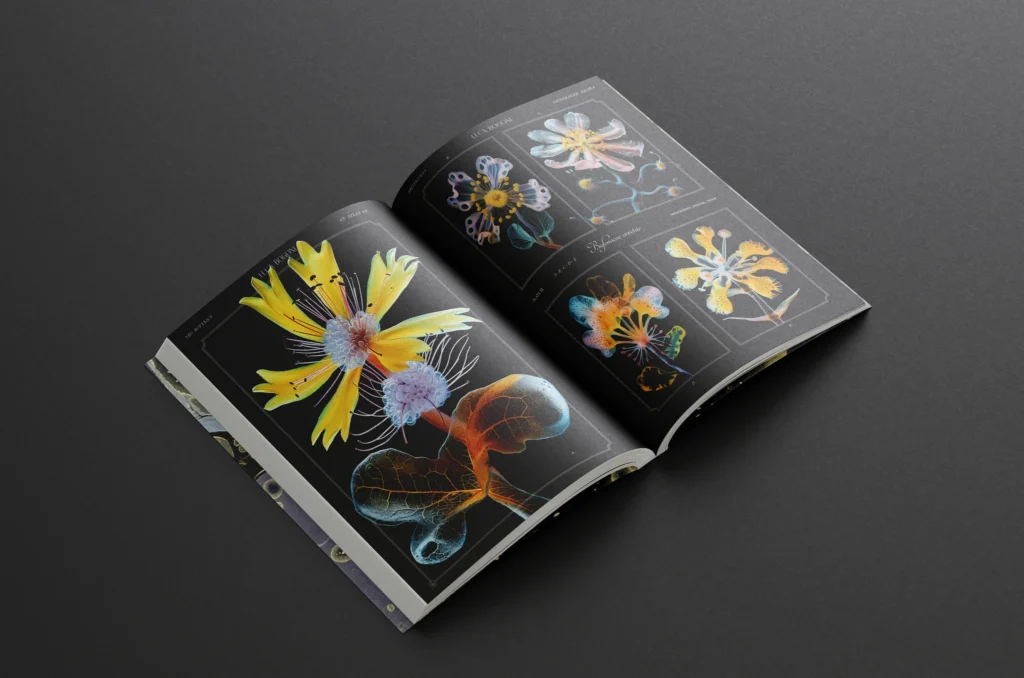
Curatorial text by Mona Schubert:
Drawing inspiration from Anna Atkins’ pioneering photographic herbarium Photographs of British Algae. Cyanotype Impressions (1843–1853), Luca Bogoni brings virtual flora into dialogue with the cyanotype process, one of the earliest photographic printing techniques.
Using AI image generators trained on real botanical imagery, Bogoni creates plant forms that, while rooted in the visual memory of actual species, exist in novel configurations that could never have occurred in nature. These images are then transferred onto transparency film and exposed to natural sunlight on hand-coated, photosensitive paper. In the early days of photography, botanists had hoped to use the medium to catalogue, preserve, and reveal the hidden structures of the natural world.
Bogoni’s works embody a tension between the artificial and the material, the objective and the imaginary. Their surfaces bear traces of two worlds: the digital imprints of AI technologies and the physical imperfections of a handmade analogue process. This encounter also unfolds in time: the near-instantaneity of machine generation contrasts with the slow chemistry of cyanotype, where images emerge only through patience and sunlight.
In this oscillation between acceleration and duration, fact and fiction, Bogoni’s images recall the Blaue Blume (Blue Flower)—the Romantic symbol of longing later evoked by Walter Benjamin as both desired and estranged. These hybrid plants become contemporary blue flowers: at once familiar and impossible, they reimagine nature as a fragile play between memory and invention.
